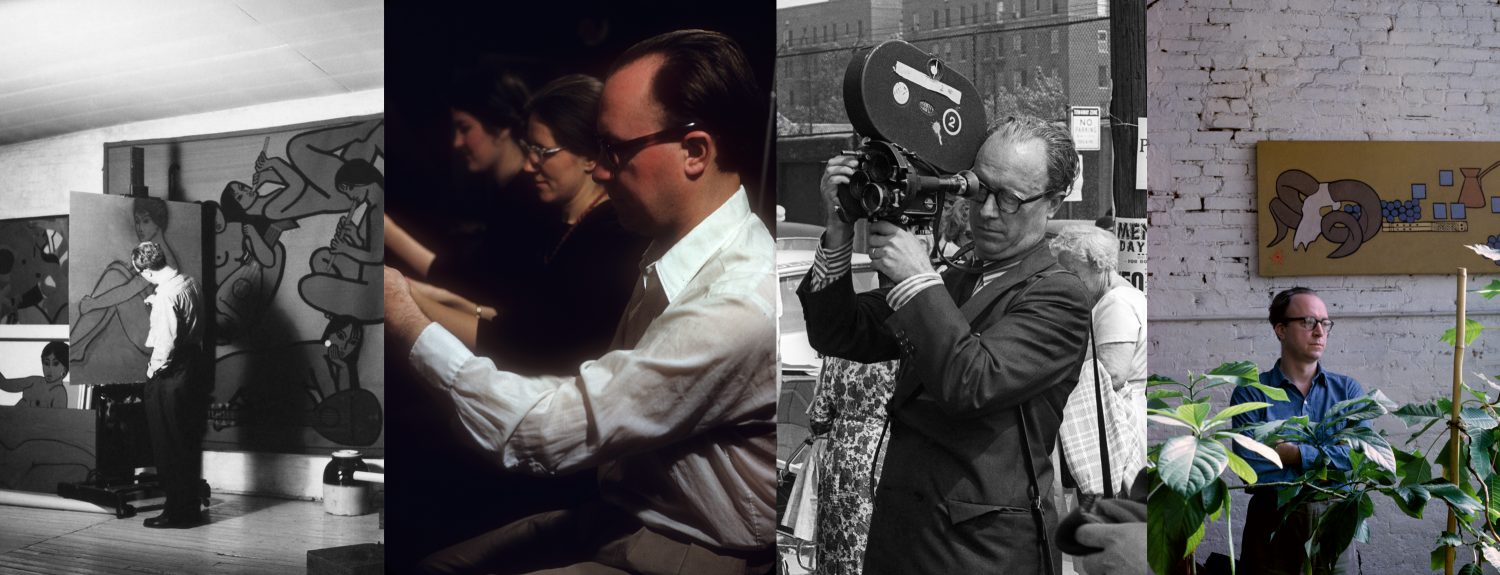
Jan Yoors was a writer, photographer, and sculptor. He was also a master of what is often considered a lost art: Tapestry. In this century, tapestry has been largely thought of as paintings stepchild – a large woven wall-hanging adapted and enlarged from a painter’s masterwork – and not as an art in and of itself. Yet it was in tapestry that Yoors’ gifts were most fully realized and expressed.
Jan Yoors was born in Antwerp, Belgium to a cultures, liberal family of artists. At the age of twelve he ran off with a gypsy tribe and lived with the kumpania on and off for the next ten years. (His memoir of this period, The Gypsies, was published in 1965 and remains a seminal work on the subject.) During World War II, Yoors worked with the Allies to help the gypsies who were being systematically exterminated. He was captured twice and imprisoned until the end of the war. (These experiences were recorded in Crossings, published in 1971.)
After the War, Yoors enrolled at the School of African and Oriental Studies, London University. While a student there, a chance visit to an exhibition of medieval tapestries revealed to him the course of his own artistic destiny. His formal training in the medium was scant, although he made a point o familiarizing himself with the world’s great weaving traditions, from Aubusson to Samarkand. His early work was largely figurative, but it became increasingly abstract in his later years.
In 1950 Yoors settled in New York, Where he set up a studio and constructed a 15-foot vertical loom. Marianne and Annebert joined him in 1951; they were to collaborate with Yoors in the weaving of all his work: Jan would start by creating a bull-size cartoon. Although he indicated colors with gouache, his real palette was the specially spun Persian wool that he had dyed to his exact specifications. Using the cartoon as a guide, Marianne, Annebert, and other skilled artisans would weave the tapestry under Jan’s strict supervision.
During the 1960s Yoors deepened his interest in photography. To research Only One New York, his 1963 feature-length documentary film about the city’s ethnic diversity, he shot photographs that were collected in a book of the same name and published in 1965. He also returned to Europe to reestablish contact with those gypsies who had survived the holocaust. The pictures he took on this journey became an exhibition at the National Museum of Science in New York City and now illustrate the paperback edition of The Gypsies.
During his life Jan Yoors’ tapestries were exhibited in numerous museums, galleries, and public buildings and were sold to major public collections (see attached lists). However, marketing his work was never a priority and as a result a vast cache of his work still resides in his Waverly Place apartment and studio. There, Marianne and Annebert continue to weave his unexecuted designs in a studio filled with hundreds of Jan Yoors’ tapestries, photographs, paintings, prints, and sculptures.